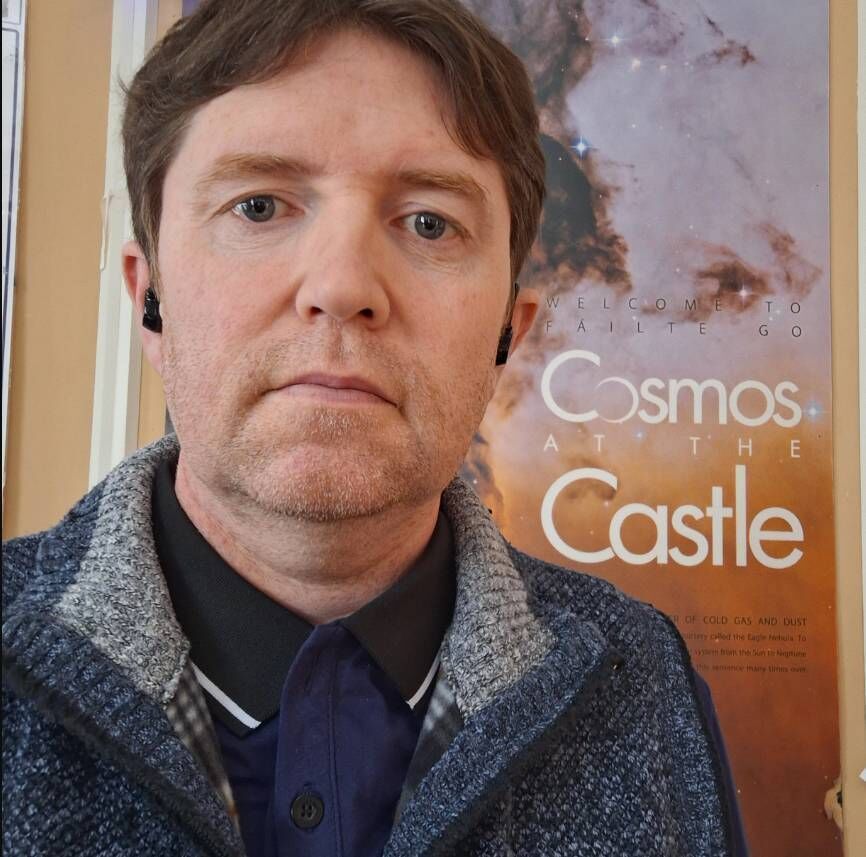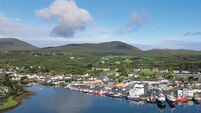Is there life on other planets? Cork astronomer says recent findings could have 'profound implications' if proven

MTU Blackrock Castle Observatory at Blackrock Castle. Astronomer at MTU's Blackrock Castle Observatory, Alan Giltinan said claims of the detection of life-associated gases in the atmosphere of a distant planet could have "profound implications” on the science community if proven. Pic: Larry Cummins
Following claims of the detection of life-associated gases in the atmosphere of a distant planet, a Cork-based astronomer has said this could have "profound implications” on the science community if proven.
Astronomer at MTU's Blackrock Castle Observatory, Alan Giltinan’s comments come following the publication of findings from a team led by the University of Cambridge, which claim they have found chemical fingerprints of dimethyl sulfide (DMS) and/or dimethyl disulfide (DMDS), in the atmosphere of the exoplanet K2-18b.
This meaning that there is potential for phytoplankton to exist within the atmosphere of this planet, which are the organic components of the plankton community, a key part of ocean and freshwater ecosystems.
Whether you’re an amateur star-gazer or a professional astronomer, the idea of another planet having the capabilities of sustaining both life forms and a fresh water source is a groundbreaking discovery, however, these claims are yet to be proven definitively.
Speaking to , Mr Giltinan said that while this would be a significant breakthrough if proven to be true, he is currently operating with “cautious optimism” as those embedded within this sector of the science industry have met the results with hesitancy.
“When you hear of publications like this, it’s a huge achievement for the astronomy community – but we need to make sure, because the last thing we want to do is to make a false claim,” said Mr Giltinan.
“In the first instance, if there is a discovery of this particular chemical molecule, then it's a very strong bio-signature of the likes of phytoplankton on that planet.
“The astronomy community are very close to finding something like this with concrete evidence; I don’t think we’re there yet, but we’re getting there,” he added.
“It’s very early in terms of its preliminary results, and at the minute there’s a bit of hesitancy on whether the results are fully understood.
“The researchers have said they are confident that the atmosphere contains this chemical compound, but there is [an ongoing] re-examination of the data happening now and preliminary results suggest that it’s not quite as concrete as the initial group thought – but we’ll have to wait and see.” The findings were discovered by the University of Cambridge team using The James Webb Space Telescope (JWST), which uses infrared light technology to see through dust and gas clouds that block visible light, revealing hidden objects, structures and chemical signatures, much like the one found in the atmosphere of K2-18b.
“When someone makes a big claim like this, a large number of other researchers are going to look at the data, so it’s not unusual for this to happen,” said Mr Giltinan.
"The nature of this compound means that it’s quite difficult for it to come into existence by other mechanisms - it may not exist in that particular format, but there is definitely a lot of molecules floating around in the atmosphere of that planet.
“What we’re looking at is very atmospheric, so if there is an ocean there, it’s going to be a different type of ocean to ours because the density of this planet is very different to Earth – it's more gaseous than it is solid,” he added.
“There’s nothing to say that there can’t be airborne organisms producing these types of molecules; I think there’s a lot about the universe that we don’t know.” K2-18b is an exoplanet, which is a planet that orbits a star outside the solar system, orbiting the red dwarf K2-18, that was first discovered in 2015.
The exoplanet is located approximately 120 light years away from Earth, which Mr Giltinan says is relatively close in the scope of our galaxy.
“This planet has a habit of throwing out some interesting results, but ultimately, we will have to use more than one telescope to actually analyse this exoplanet, to see if there’s anything really there.
“The JWST has the unique ability to look at exoplanets in infrared, which we can't do from the ground, so it gives us different eyes on a planet like this – so that’s why it’s so beneficial.
“It’s not somewhere we’re going to any time soon, nor is it somewhere we’re going to be communicating with any time soon – but in the universal scale, its quite close.” While researchers are not able to photograph K2-18b, they are able to view specific compounds which may be prevalent in the planet's atmosphere by using advanced technology and specialised tools like the JWST.
“We don’t have direct photos of K2-18b – but if we examine the light as it comes through the atmosphere of that planet using spectrum, which in essence is us breaking down the light into individual light components, and look for very specific fingerprints or wavelengths, we can ascertain what molecules are in the atmosphere of that planet,” said Mr Giltinan.

“So for me, as a researcher in the field, it’s fascinating that we’re even having conversations like this – we're pushing boundaries, and the JWST has really opened up avenues like this to have these discussions.
“Which would be a strong indication that life is actually very prevalent in the universe in general, so it does have profound implications if there is some level of proof found at some point in the not so distant future.”
Mr Giltinan further said that advancements in the astronomy field over the last two decades alone have helped researchers to gather and assess data at a faster pace, enabling the community to make scientific breakthroughs such as this claim.
“It’s a very exciting time in astronomy – the likes of AI and deep learning are really helping to manoeuvre things and push things along at a pace that we wouldn’t previously have been able to do in a quick and efficient manner,” he said.
“There’s so many new techniques and computer hardwares that we didn’t have even 15 to 20 years ago, so things have changed very rapidly.
“We’re still only scratching the surface, but we’re starting to get a real handle on some of the elements that the universe is talking to us about,” he added.
“It’s a fascinating time to be around and to be a scientist in the field.”







 App?
App?


